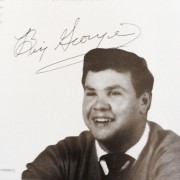The Birth of Beach Music
Come the summer of 2017, the Shag, the legendary dance of the South, will celebrate its 74th anniversary of conception.
In June of 1943, it came to pass that Race Music, gut-level Rhythm and Blues, the sound later labeled Rock-n-Roll found its way onto jukeboxes along the Carolina coast. The Southern teenagers called it Beach Music.
In response to that rolling-and-rocking rhythm, the Shag dance was conceived—a unique form in American terpsichorean history. Descended from West European influences as diverse as the minuet, the waltz, and the highland fling— cross fertilized with the jitterbug —the Shag began evolving the moment Beach Music found the dancers.
 The beach was the only place white kids heard the big city rhythms of the ghetto. The music was created and performed by black artists, recorded and produced by black technicians, marketed and sold exclusively to a black audience, never played on white radio stations, never placed on jukeboxes in venues frequented by whites. And then at the height of World War II, in Carolina Beach, North Carolina and Myrtle Beach, South Carolina something unique and prophetic occurred. Ten years ahead of Elvis Presley—a decade before the status quo was rocked and the Victorian inhibitions of youth rolled away forever— a population of white teenagers too young to fight in the war were suddenly introduced to the African-American sound that changed everything.
The beach was the only place white kids heard the big city rhythms of the ghetto. The music was created and performed by black artists, recorded and produced by black technicians, marketed and sold exclusively to a black audience, never played on white radio stations, never placed on jukeboxes in venues frequented by whites. And then at the height of World War II, in Carolina Beach, North Carolina and Myrtle Beach, South Carolina something unique and prophetic occurred. Ten years ahead of Elvis Presley—a decade before the status quo was rocked and the Victorian inhibitions of youth rolled away forever— a population of white teenagers too young to fight in the war were suddenly introduced to the African-American sound that changed everything.
Among those kids were Big George Lineberry, a teenaged jukebox mechanic, and Chicken Hicks, a hot fast dancer in the boardwalk jump joints. Chicken and Big George took Rock-n-Roll to the white side of the Jim Crow rope ten years ahead of Elvis. Beach Music begat the only first dance of the Rock Revolution: Shag, the legendary dance of the South.



